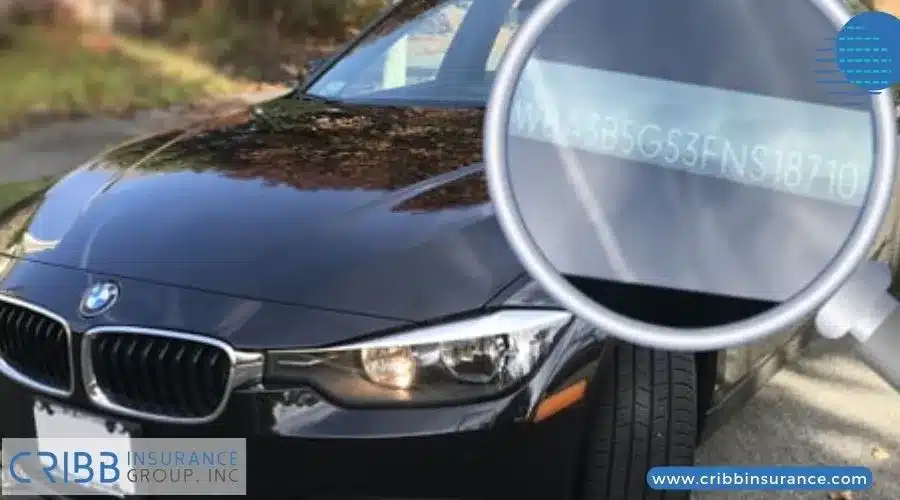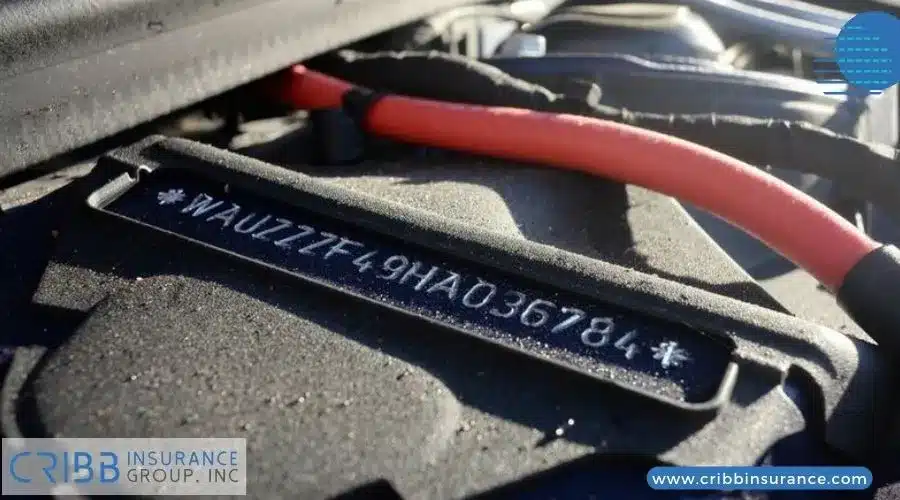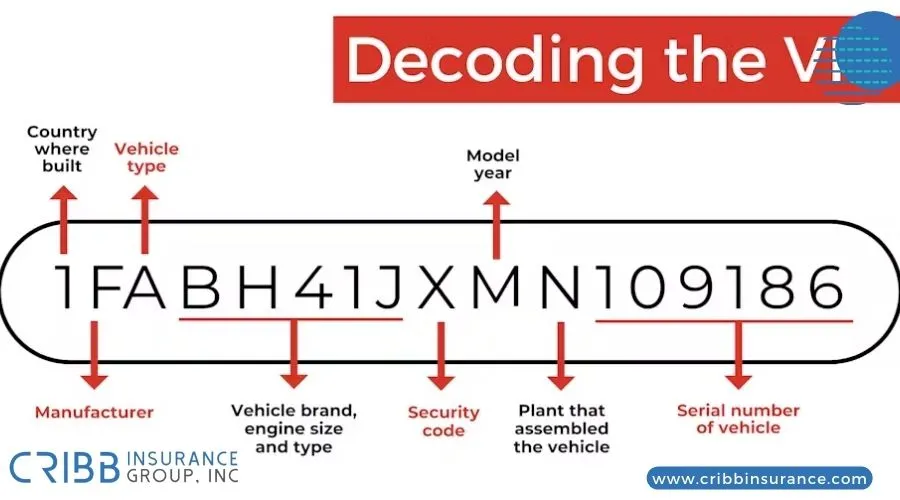It is important to know where Is the VIN number located on a car for many reasons, including vehicle registration, auto insurance, and maintenance records. The VIN, or Vehicle Identification Number, is a unique code assigned to every car, acting as its fingerprint. This blog post will help you locate the VIN on your car, check its authenticity, and understand its importance. Whether you’re buying a car, filing insurance claims, or just trying to locate the VIN for any official purposes, this guide will provide all the information you need in a simple and clear way.

What Is a VIN Number?
The VIN, or Vehicle Identification Number, is a 17-character code made up of letters and numbers. It provides essential details about a car, including its manufacturer, model, year, and unique identifier. Every car manufactured after 1981 has a standardized VIN, while older cars may have shorter VINs.
Why Is the VIN Important?
The VIN serves multiple purposes, such as:
- Vehicle History: Provides information about past accidents, repairs, and recalls.
- Ownership Proof: Confirms you own the vehicle for registration and insurance.
- Safety: Helps locate stolen cars or verify parts during maintenance.
How to Find Car VIN number
Finding the VIN is simple if you know where to look. The VIN can be found both on the car itself and in official documents. Here are the most common locations:
- Dashboard on the Driver’s Side: The easiest way to locate the VIN is by sitting in the driver’s seat and looking at the dashboard.
- The VIN is usually placed on the lower-left corner, near the base of the windshield.
- If it’s hard to see, step outside the car and look through the windshield from the driver’s side.
- Driver-Side Door or Doorjamb: Another common location is the driver-side door or doorjamb.
- Open the driver-side door and check for a label on the door’s edge.
- Look at the doorjamb area where the door latches when closed.
- Under the Hood: Many cars also have the VIN located under the hood.
- Check near the front of the engine block.
- Some manufacturers place the VIN on a body plate attached to the firewall inside the engine compartment.
- Spare Tire Area: In some vehicles, the VIN may be hidden under the spare tire.
- Open the trunk and lift the spare tire to find a VIN sticker or plate.
- Other Possible Locations:
- Rear wheel well: Check inside the well above the tire on the driver’s side.
- Vehicle frame: Look for the VIN near the windshield washer container at the front of the car frame.
If you cannot locate the VIN on the car, you can find it in official documents or contact the dealership for assistance.

Locating the VIN on Official Documents
Finding the VIN (Vehicle Identification Number) on official documents is an essential step for verifying a vehicle’s identity and history. This unique 17-character code can provide important details about the car’s make, model, year, and more. It’s often required when registering a car, filing insurance claims, or performing background checks. Understanding where to find this information on key documents can save time and ensure you’re dealing with legitimate vehicle details. In this section, we will go over the most common places where you can find the VIN on official paperwork, making it easier to confirm that you’re looking at the correct information.
- Car Title and Registration: The VIN is listed on the title and registration documents issued by your state’s Department of Motor Vehicles (DMV).
- Look at the top section of your car title.
- Check the registration card for the VIN number.
- Insurance Policy or Card: Your insurance company uses the VIN to identify your car.
- Check your insurance policy or ID card for the VIN.
- If you have an older policy, request a current copy from your insurer.
- Owners Manual: The VIN is usually listed in the owner’s manual provided when you purchase a new car.
- Loan or Lease Agreements: If you financed your car, the VIN should be on the loan or lease agreement paperwork.
Confirming the VIN is Authentic
Verifying the authenticity of a VIN is crucial to ensure the vehicle’s history is accurate and that the car is legitimate. This step is especially important if you are buying a used car or need to confirm details for insurance purposes. Here are some tips to help you confirm that the VIN is authentic:
- Check All VIN Locations: Make sure the VIN matches across all locations on the car and its official documents.
- Compare the VIN on the dashboard, doorjamb, engine block, and any other visible locations.
- Ensure the VIN on your car matches the one listed on the title, registration, and insurance policy.
- Look for Signs of Tampering: Inspect the VIN plate or sticker carefully for any signs of alteration.
- Scratches, uneven etching, or replaced rivets on the VIN plate could indicate tampering.
- Mismatched or misaligned fonts are also red flags.
- Use an Online VIN Checker: Verify the VIN online to confirm its authenticity and obtain a detailed vehicle history report. Trusted websites include:
- National Highway Traffic Safety Administration (NHTSA): Use the NHTSA’s recall lookup tool to confirm the VIN and check for unresolved recalls.
- NICB.org: The National Insurance Crime Bureau allows you to check if a car has been reported stolen or salvaged.
- Check with a Manufacturer or Dealership: If you suspect the VIN might be altered or incorrect, contact the car manufacturer or a certified dealership. They can confirm whether the VIN matches their records.
By taking these steps, you can confidently confirm the VIN is authentic and avoid potential problems with ownership, registration, or insurance. This verification process can provide peace of mind, especially when purchasing a used vehicle or handling official vehicle-related transactions.

Understanding the Components of a VIN
The Vehicle Identification Number (VIN) is a unique 17-character code assigned to each vehicle at the time of manufacture. Understanding how a VIN is structured can help you decode important information about the car, such as its make, model, year, place of manufacture, and unique characteristics. Here’s a breakdown of how the VIN is structured:
| Section | Position in VIN | Components | Description |
| World Manufacturer Identifier (WMI) | 1st to 3rd character | 3 characters | Identifies the manufacturer and the country where the vehicle was produced. The first character indicates the country of origin, the second character represents the manufacturer, and the third can signify the vehicle type or division. |
| Vehicle Descriptor Section (VDS) | 4th to 9th character | 6 characters | Provides detailed information about the vehicle’s model, body style, engine type, and safety features. This section is unique to the manufacturer and helps distinguish between similar models. |
| Check Digit | 9th character | Single character | A digit from 0-9 or an ‘X’ that acts as a check for verifying the accuracy of the VIN. It is calculated using a specific formula to ensure the VIN has not been tampered with. |
| Vehicle Identifier Section (VIS) | 10th to 17th character | 8 characters | The last part of the VIN, which includes the model year (10th character), the assembly plant code (11th character), and the serial number (12th to 17th characters). It is unique for each vehicle and provides identification details specific to that car. |
By understanding these components, you can easily interpret the basic details about any vehicle just by examining the VIN.
How to Use the VIN for Vehicle Information
The VIN is not just a unique identifier for a vehicle; it can also be a powerful tool for gathering information about a car. Here are some common ways to use a VIN to gather important details:
- Checking Vehicle History: A VIN can be used to look up a car’s history, including past accidents, title status, and previous ownership. Services such as Carfax or AutoCheck provide detailed reports that help you make informed decisions, especially when buying a used vehicle.
- Identifying Recalls: Vehicle recalls are often specific to certain VINs, so using the VIN to check for recall notices is a crucial step in vehicle safety. You can visit the National Highway Traffic Safety Administration (NHTSA) website to see if your car has any active recalls that need to be addressed.
- Verifying Ownership and Title Information: The VIN can be cross-referenced with a state’s DMV database to verify if the car has a clean title or if it has been marked as stolen or salvaged. This helps prevent buying a car that might have hidden issues.
- Checking Insurance Status: Insurance companies use the VIN to look up details regarding claims and coverage history. It can help you determine if the car has ever been involved in significant damage, which may affect your premiums or insurance options.
- Determining Vehicle Specifications: A VIN can provide you with information about the car’s specifications, such as engine size, trim level, and even color. This information can be found using online tools or databases provided by the vehicle manufacturer.
- Tracking the Car’s Location: While this is more relevant for tracking lost or stolen vehicles, certain law enforcement and vehicle tracking services use the VIN to locate a car or find out where it has been registered in the past.
Using the VIN effectively allows you to gather comprehensive information to assess the condition and legitimacy of a vehicle, making it easier to make safe and informed decisions.

Why Knowing Your VIN Matters
Understanding where the VIN number is located on a car is essential for verifying its history, ensuring authenticity, and managing ownership documentation. By knowing how to locate the VIN, you can streamline many processes, such as registration, insurance claims, and even vehicle maintenance.
At Cribb Insurance Group Inc., we understand the importance of having accurate information about your car. Knowing your VIN can save you time and hassle, especially when handling insurance claims or verifying your vehicle’s history.
Frequently Asked Questions
What Does a VIN Number Tell You?
A VIN reveals key information about your car, such as its make, model, manufacturing year, and origin. It also provides a detailed vehicle history, including past accidents and repairs.
Can a VIN Be Used to Check for Recalls?
Yes, you can use your VIN to check for recalls. Visit the National Highway Traffic Safety Administration (NHTSA) website and enter your VIN to see if there are any unresolved recalls.
How Do I Verify the VIN Is Authentic?
Ensure the VIN matches on all locations of the car and the documents. Look for signs of tampering, such as scratches or mismatched labels, especially on the dashboard and doorjamb.
What Should I Do If I Can’t Find the VIN?
If you can’t locate the VIN, contact your dealership, car manufacturer, or insurer. They can assist in finding it or provide records with the VIN information.
Is the VIN Number Unique to Each Car?
Yes, every car has a unique VIN, much like a fingerprint. This ensures no two vehicles share the same identification number.
Protect Your Vehicle with Cribb Insurance
Now that you know where is the VIN number located on a car, take the next step to protect your vehicle. At Cribb Insurance Group Inc, we offer comprehensive auto insurance tailored to your needs. Whether you’re looking for liability coverage or full protection, we’ve got you covered.
Protect your car and drive with confidence!





